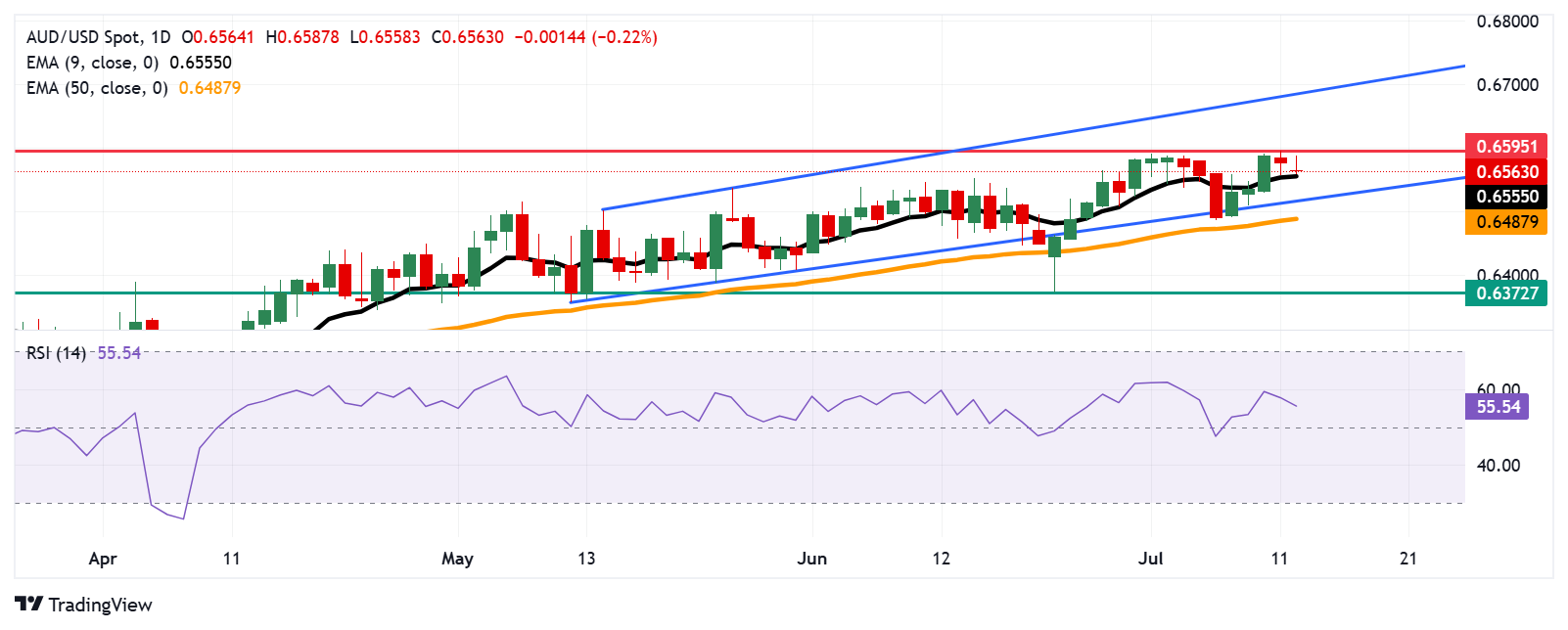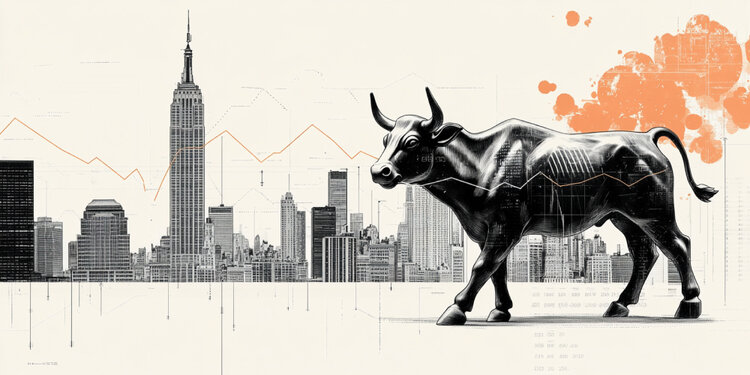- The Australian dollar decreases after the publication of China’s commercial balance data on Monday.
- BHP of Australia signed a memorandum of understanding with the Chinese battery manufacturer Catl.
- Trump announced that a 30% tariff on imports from the European Union and Mexico will enter into force on August 1.
The Australian dollar (AUD) fell against the US dollar (USD) on Monday, after the data of the China Balance. In addition, the Aud/USD torque could lose more land as the US dollar recovers its position amid a renewed caution of the market around the Federal Reserve Policy Perspective (FED), driven by the caution comments of the members of the FED.
The China Balance of China reached CNY585.96 billion, reducing from the previous figure of CNY743.56 billion. Chinese exports increased by 7.2% year -on -year in June, after 6.3% in April. Meanwhile, imports increased a 2.3% year -on -year in the same period, recovering from an earlier fall of 2.1%.
In terms of US dollar (USD), China’s commercial surplus expanded more than expected in June. The commercial balance reached +114.77b compared to +109b expected and +103.22b above. Exports increased 5.8% year -on -year compared to 5% expected and 4.8% previous. Imports increased 1.1% year -on -year compared to 1.3% expected and the previous fall of 3.4%.
A Chinese customs spokesman said that China’s exports will continue to advance in the next stage despite the challenges. It is important to note that China’s economic data could impact the AU, since China is an important commercial partner for Australia.
The AU could have received support since the Mining and Australian metal company BHP signed a memorandum of understanding with the Chinese battery manufacturer Catl. The Association aims to explore the collaboration in battery technology for mining and locomotive equipment, including fast charge infrastructure. In addition, the two companies will also evaluate opportunities in energy storage systems and battery recycling solutions for BHP mining operations.
The Australian Reserve Bank (RBA) could keep interest rates in August to make inflation return to the goal of 2-1/2% sustainably. The governor of the RBA, Michele Bullock, declared that the risks of inflation persist, citing the high unit labor costs and the weak productivity as factors that could boost inflation above the current projections. Meanwhile, the Vice Governor of the RBA, Andrew Hauser, highlighted the growing global economic uncertainty and warned that the impact of tariffs on the world economy could be significant.
The Australian dollar decreases despite a weaker US dollar amid growing commercial tensions
- The US dollar index (DXY), which measures the value of the US dollar (USD) compared to six main currencies, remains subdued around 97.90 at the time of writing. The dollar loses ground due to the escalation of global commercial tensions.
- The president of the USA, Donald Trump, announced, on Saturday, a 30% tariff on imports of the European Union (EU) and Mexico as of August 1. He also proposed a general tariff rate of 15%-20%on other commercial partners, an increase with respect to the current base rate of 10%. In response, the European Union announced on Sunday that it will extend its pause in retaliation measures against US tariffs until the beginning of August, hoping to reach a negotiated agreement.
- Chicago Fed President Austan Goolsbee declared that the ongoing commercial policy at the hands of Trump’s constant tariff threats could hinder the Fed’s ability to make rates cuts that both the market in general and Trump himself want to see.
- The US government registered a budget surplus of 27,000 million dollars in June, promoted by an increase in customs rights revenue, which reached a record of 27.2 billion dollars. This increase in tariff collection, which comes largely from the policies introduced during the Trump administration, contributed to a 13% increase in the total income of the budget, which amounted to 526 billion dollars. Meanwhile, federal expenditure decreased 7% to 499 billion dollars.
- The minutes of the Federal Open Market Committee (FOMC) of the June 17-18 meeting, published last week, indicated that those responsible for the policy largely maintained a waiting position regarding future decisions about interest rates.
- The China consumer price index rose 0.1% year -on -year in June after a 0.1% drop in May. The market consensus was 0% in the reported period. Meanwhile, the monthly IPC decreased 0.1% compared to the expected reading of 0%. In addition, the production price index (IPP) fell 3.6% year -on -year in June, after a 3.3% drop in May. The data were lower than the 3.2%market consensus. Any change in the Chinese economy could impact the AU, since China and Australia are nearby commercial partners.
- The Reuters survey showed that 30 analysts predicted that the Bank of the Australian Reserve will cut the interest rate at 25 basic points to 3.60% in August. The four main banks of Australia, Anz, CBA, NAB and Westpac, also support the rate cut.
- The Australian treasurer, Jim Chalmers, said that the decision of the Bank of the Australian Reserve of maintaining the rates was not the result that millions of Australians expected or what the markets anticipated. Chalmers added that the Central Bank has indicated a clear direction on inflation and interest rates in the future.
The Australian dollar falls to the nine -day Ema about 0.6550
The AUD/USD is negotiating around 0.6560 on Monday. The technical analysis of the daily graphic indicated a persistent bullish feeling as the pair moves up into the ascending channel pattern. The 14 -day relative force (RSI) index remains above 50, strengthening the bullish bias. In addition, the pair is positioned slightly above the nine -day exponential (EMA) mobile average, indicating that the impulse of the short -term price remains stronger.
On the positive side, the Aud/USD torque could aim at the new maximum of eight months of 0.6595, which was reached on Friday. A rupture above this level could strengthen the bullish bias and open the doors so that the torque explores the region around the upper limit of the ascending channel around 0.6690.
The aud/USD torque is testing its initial support in the nine -day EMA of 0.6555. A successful rupture below this level would weaken the feeling of the market and exert down the torque to test the lower limit of the upward channel around 0.6520, followed by the EMA of 50 days at 0.6487.
AUD/USD: Daily graphic

Australian dollar Price today
The lower table shows the percentage of change of the Australian dollar (AUD) compared to the main currencies today. Australian dollar was the weakest currency against the Swiss Franco.
| USD | EUR | GBP | JPY | CAD | Aud | NZD | CHF | |
|---|---|---|---|---|---|---|---|---|
| USD | -0.05% | 0.13% | 0.04% | -0.02% | 0.01% | 0.26% | -0.05% | |
| EUR | 0.05% | 0.16% | 0.09% | 0.00% | 0.04% | 0.30% | -0.01% | |
| GBP | -0.13% | -0.16% | -0.12% | -0.15% | -0.11% | 0.15% | -0.03% | |
| JPY | -0.04% | -0.09% | 0.12% | 0.05% | -0.03% | 0.28% | -0.04% | |
| CAD | 0.02% | -0.01% | 0.15% | -0.05% | 0.03% | 0.30% | -0.02% | |
| Aud | -0.01% | -0.04% | 0.11% | 0.03% | -0.03% | 0.23% | -0.05% | |
| NZD | -0.26% | -0.30% | -0.15% | -0.28% | -0.30% | -0.23% | -0.31% | |
| CHF | 0.05% | 0.00% | 0.03% | 0.04% | 0.02% | 0.05% | 0.31% |
The heat map shows the percentage changes of the main currencies. The base currency is selected from the left column, while the contribution currency is selected in the upper row. For example, if you choose the Australian dollar of the left column and move along the horizontal line to the US dollar, the percentage change shown in the box will represent the Aud (base)/USD (quotation).
Australian dollar – frequent questions
One of the most important factors for the Australian dollar (Aud) is the level of interest rates set by the Australian Reserve Bank (RBA). Since Australia is a country rich in resources, another key factor is the price of its greatest export, iron mineral. The health of the Chinese economy, its largest trading partner, is a factor, as well as inflation in Australia, its growth rate and commercial balance. The feeling of the market, that is, if investors are committed to more risky assets (Risk-on) or seek safe shelters (Risk-Off), it is also a factor, being the positive risk-on for the AUD.
The Australian Reserve Bank (RBA) influences the Australian dollar (AUD) by setting the level of interest rates that Australian banks can lend to each other. This influences the level of the interest rates of the economy as a whole. The main objective of the RBA is to maintain a stable inflation rate of 2% -3% by adjusting the interest rates or the low. Relatively high interest rates compared to other large central banks support the AU, and the opposite for the relatively low. The RBA can also use relaxation and quantitative hardening to influence credit conditions, being the first refusal for the AU and the second positive for the AUD.
China is Australia’s largest commercial partner, so the health of the Chinese economy greatly influences the value of the Australian dollar (Aud). When the Chinese economy goes well, it buys more raw materials, goods and services in Australia, which increases the demand of the AU and makes its value upload. The opposite occurs when the Chinese economy does not grow as fast as expected. Therefore, positive or negative surprises in Chinese growth data usually have a direct impact on the Australian dollar.
Iron mineral is the largest export in Australia, with 118,000 million dollars a year according to data from 2021, China being its main destination. The price of iron ore, therefore, can be a driver of the Australian dollar. Usually, if the price of iron ore rises, the Aud also does, since the aggregate demand of the currency increases. The opposite occurs when the price of low iron ore. The highest prices of the iron mineral also tend to lead to a greater probability of a positive commercial balance for Australia, which is also positive for the AUD.
The commercial balance, which is the difference between what a country earns with its exports and what it pays for its imports, is another factor that can influence the value of the Australian dollar. If Australia produces highly requested exports, its currency will gain value exclusively for the excess demand created by foreign buyers who wish to acquire their exports to what you spend on buying imports. Therefore, a positive net trade balance strengthens the AUD, with the opposite effect if the commercial balance is negative.
Source: Fx Street
I am Joshua Winder, a senior-level journalist and editor at World Stock Market. I specialize in covering news related to the stock market and economic trends. With more than 8 years of experience in this field, I have become an expert in financial reporting.







